Baby Ferrari and Aston Martin classics set to go racing in 2023
The Little Car Company is set to launch a new racing series featuring scaled-down Ferrari Testa Rossas, Aston Martin DB5s and Bugatti Baby IIs
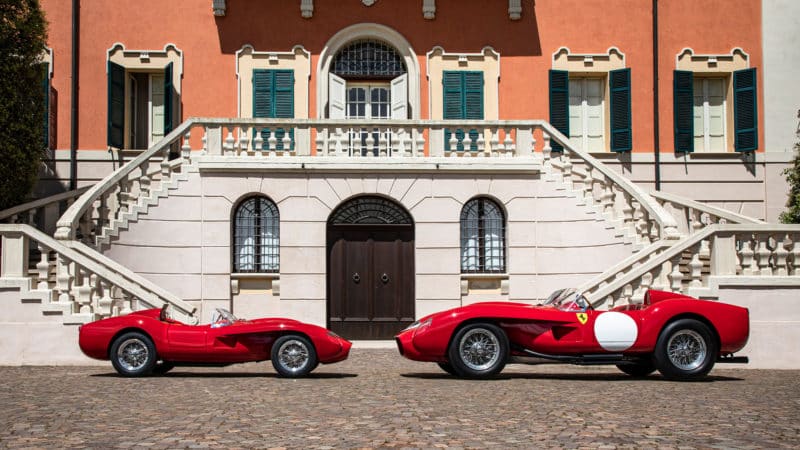
Scaled sports car: baby Testa Rossa meets the original
LCC
Its scaled-down, electrically-powered classic car reproductions include the Bugatti Type 35 and Aston Martin DB5, and could be considered the ultimate toy for wealthy racing fans.
That reputation is only going to grow this year as the Little Car Company, which makes the vehicles costing as much as £90,000, plans to get serious with a race series for owners.
Exclusively for its DB5 Junior and recently launched Testa Rossa J models, plans are still being finalised but should see owners going wheel to wheel at various circuits around the country. The series will be joined by another aimed at families that will pit mum, dad and the children against each other in autosolo events at the wheel of the firm’s Bugatti Baby II models — without the expense of ownership.
“Our new race series for owners of our DB5 Junior and Testa Rossa J models will be fun and show our cars in a different light, Ben Hedley, founder and CEO of the Little Car Company and a keen racer, told Motor Sport. “However, I know from my own experience that racing can take you away from the family at weekends. It’s why we plan to launch an autosolo competition that parents and their children can enjoy. We’ll provide the Bugatti Baby IIs and all that families will need to bring are helmets and the right clothing.”
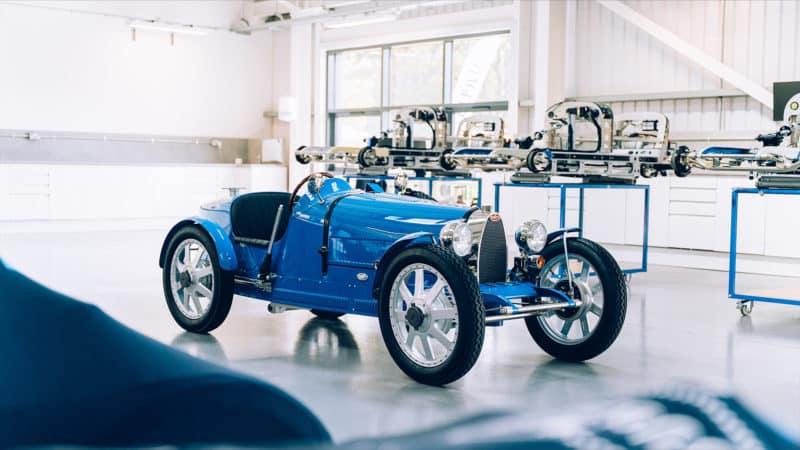
New racing series will pit families against each other in Bugatti Baby IIs
LCC
Racing the small-scale cars promises plenty of fun. Indeed, in the company offices at Bicester Heritage is a bottle of champagne intended for anyone who takes one of the firm’s demonstrators for a drive and returns without a smile on their face.
“No one has claimed it yet,” says Hedley. “They’ve all come back smiling.” Try as hard as we might to buck the trend, so do we when we take the firm’s Aston Martin DB5 Junior demonstrator for a 20mph spin around the old bomber base. Maybe it’s the apparent absurdity of driving something so small that generates a grin from ear to ear or the sheer astonishment at how car-like it feels. Whatever the reason, the bottle of champagne remains firmly corked.
Which is a shame because what’s happening at the Little Car Company, founded only in 2019, is worth raising a glass of bubbly to. On the day we visit, just before Christmas, it finishes building its 250th car, a Ferrari Testa Rossa J; a 75% reproduction of the 250 Testa Rossa that’s authentic in almost every detail.
Each year since its launch the firm has doubled in size, with turnover next year projected to be £24 million. To help achieve that, it has just launched a new round of funding to expand the existing 60-strong workforce and increase annual production to at least 300 cars and possibly even 500.
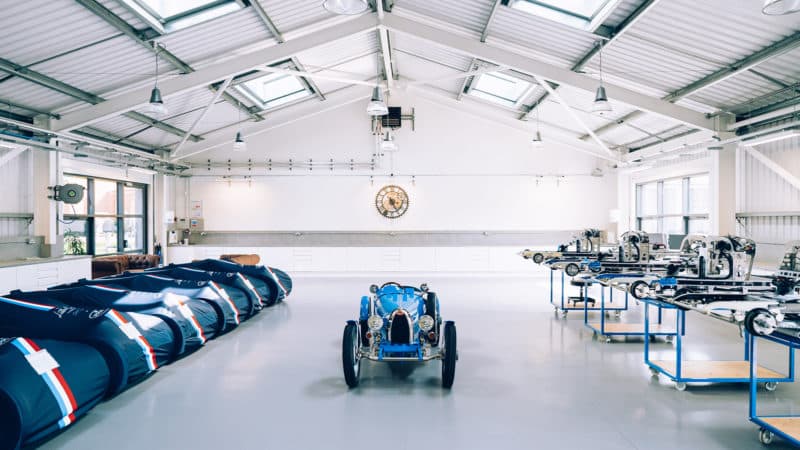
Production line could build 500 cars per year
LCC
Also this year, the company plans to launch two new models (Hedley’s not saying what they are yet), taking the range, which comprises the aforementioned DB5 Junior, the Testa Rossa J and the company’s first car, the Bugatti Baby II, to five. In addition to these, there’s a James Bond No Time To Die version of the DB5 Junior, limited to 125 copies, coming. It’s fitted with retractable headlights and mini-guns (yes, they make a gunfire sound), a digital numberplate that can display six different registration numbers and a smoke machine. Prices will start at £90,000.
All this and Hedley and his team are also in the midst of developing what he says is the firm’s first mass-market vehicle. This time it will be scaled up: a real-world-size reproduction of model maker Tamiya’s popular Wild One remote-control buggy. Called the Wild One MAX, the open two-seat vehicle has a tubular steel spaceframe and a roll cage and is as wide as Hedley’s Nissan GTR. A Formula 1 engineer helped to tune the handling, which features double wishbone suspension at the front and trailing arms at the rear. Bilstein adjustable dampers and Brembo discs all round complete the set-up. The rear-mounted electric motor will be offered with up to 32hp for a top speed of around 65mph and there’ll be up to eight battery packs giving the 375kg vehicle a range of as much as 120 miles. “Our aim is to create the first fun electric car,” says Hedley. “So that it can be driven on the road, it will be homologated as a quadricycle.”

Wild One MAX will be supersized road-legal version of Tamiya model
LCC
Prices for the MAX are expected to start at around £15,000 when it goes on sale next summer and customers will be able to buy it fully assembled – the Little Car Company will build the first 100 before outsourcing production to a third party – or in kit form. “We bought a Caterham and practised building it to see how we could simplify the process,” says Hedley.
For off-roading, the buggy rides on big balloon tyres but Hedley, who races at weekends, is thinking of offering it with skinnier ones for the track.
How has the Little Car Company, founded just three years ago remember, achieved so much, so quickly? The answer begins with Hedley himself. A petrolhead since he was a boy, he studied mechanical engineering at Cambridge before going on to be a business consultant and entrepreneur. One of his businesses was building what he calls ‘posh karts’.
One day, in late 2018, he took a call from Bugatti. “They asked if, for Bugatti’s 110th anniversary, we would build a reproduction of the half-scale Bugatti Type 35 ‘Baby’ that Ettore Bugatti and his son Jean built for Ettore’s youngest son, Roland.”
The original Baby was powered by a rear-mounted electric motor and was so popular with customers collecting their full-size cars that Bugatti added it to its model range and eventually sold around 500. It was a toy intended to be driven by small children but Hedley based his reproduction version as closely as possible on an existing Type 35 racing car (in fact, it’s an original 1924 French Grand Prix racer) and increased the Baby’s size to 75% of the original so that adults could also drive it. His team then created an authentically trimmed and handbuilt body for it. “Bugatti expected us to make a toy but we wanted to do it properly,” says Hedley. “They loved it.”
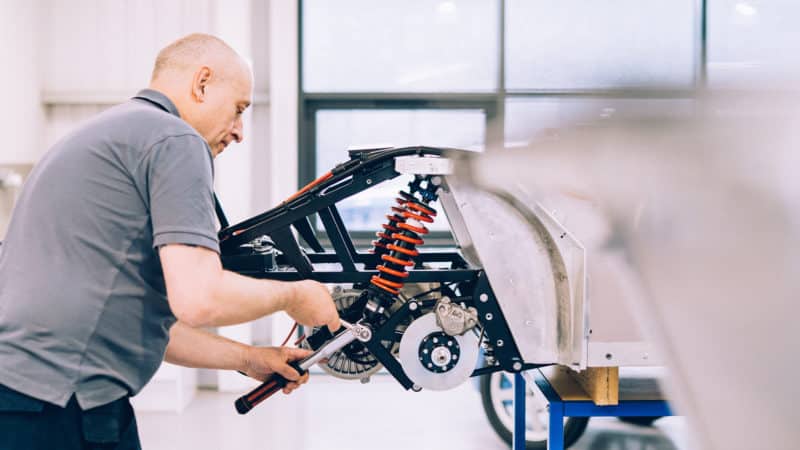
Up to 85% of each car is sourced and made in the UK
LCC
For the entrepreneur, it was proof of concept and with Bugatti’s blessing, Hedley decided to build and, hopefully, sell 500 of the little cars. Each has a 1.4kWh battery pack powering a 1kW rear-mounted motor while, in a wink to the Bugatti Chiron’s speed key, 4kW and, on the Vitessse and Pur Sang versions 10kW, is available at the turn of a key hidden in the door trim. Top speeds range from 30mph to 42mph and to date, the Little Car Company has built 200 of them, with prices starting at £36,000.
Buoyed by this success, Hedley cast around for a new project and identified another model likely to appeal to enthusiasts: the Aston Martin DB5 convertible. The design was taken from a scan of an original DB5 and with the exception of the powertrain, the mechanicals are largely the same, although tweaked to improve the driving experience. Again, the same construction principles applied: the finest craftsmanship and top-quality components. “It’s so over-engineered, you could uprate it to 250hp and it’d be fine,” says Hedley. The DB5 is officially sanctioned by Aston Martin and 1059 copies will be produced.
Which brings us to the Little Car Company’s latest creation: the Testa Rossa J. “I met the team at Ferrari to pitch three ideas but they said they’d already decided on the car!” recalls Hedley. “For it to be faithful to the original 250 Testa Rossa, we scanned the original chassis and component drawings so that our scaled version is built around the correct chassis spars and has the same suspension geometry.”
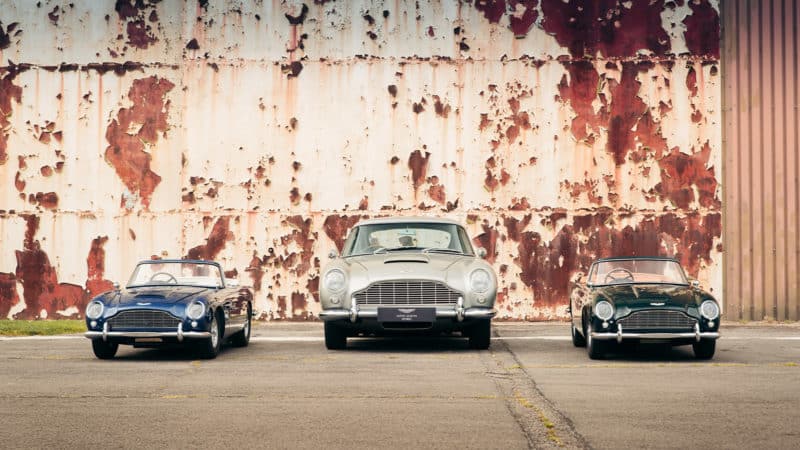
The Little Car Company is building 1059 Aston Martin DB5s — the same number as the original production run
LCC
The aluminium bodies are hand-beaten in Northampton and painted in Coventry. Customers can depart from the colour schemes of the 19 full-size cars originally built but only in consultation with Ferrari. The Testa Rossa J is limited to 299 cars and prices start at £97,000.
It’s a price that begs the question: who buys the Little Car Company’s scaled-down reproductions? Hedley says customers range from people who have the real thing and want a companion car for it, through collectors who squirrel them away to people who drive them, such as the chap in Holland who has special permission to drive his Testa Rossa J on the road.
Expect to see them fighting for victory this summer, as the mini racers take to the track.
